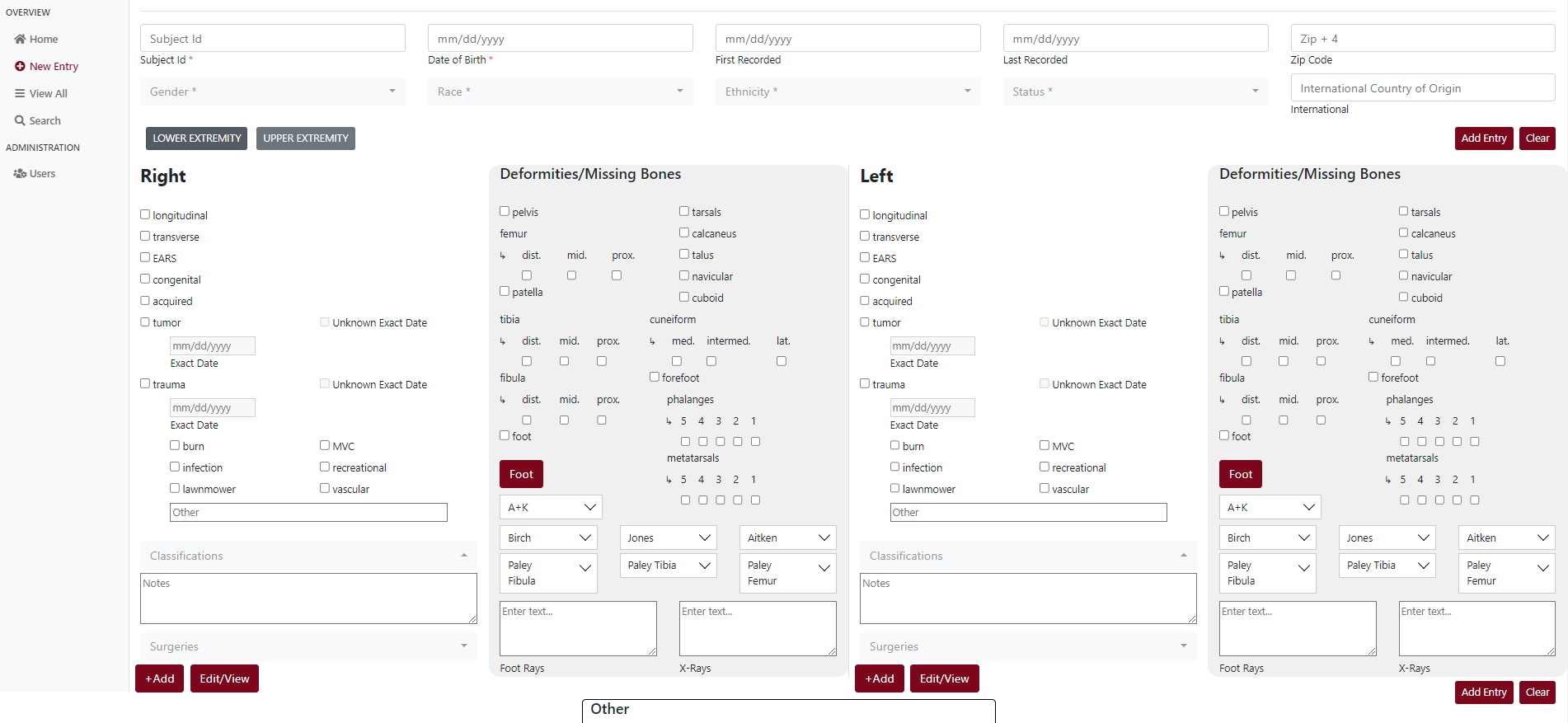The Lower Extremity Amputation and Deficiencies Registry (LEADeR) site is a website we created for Shriners Children’s Lexington for reporting and analyzing congenital and acquired limb differences in pediatric patients. Through this web interface, Shriners researchers can add new patients, view data for existing patients, and form complex queries to extract exactly the information they need for studies and analysis. Below is a brief walkthrough of the primary pages of this web interface.
New Entry

On this page, researchers can input data for new patients, such as demographic information and medical data, like causes of injuries or deformities. Additionally, there are dropdowns for different classification and surgery types. There are additional modals to make data entry easier; for example, this image of a foot can make the process more visual, allowing the user to fill in the form with the checkboxes on the image.

View All
Users can view data for all patients on this page.

Through the ‘column visibility’ button, users can change which columns are displayed to view the specific data they need. On the right side, there are buttons to edit or delete each entry. When choosing the edit button, the user will be sent back to the “New Entry” page, but all data will be filled out for that patient, giving a comprehensive overview. Users can edit the data on that page as needed and resubmit.
Search
The LEADeR site also contains a comprehensive search page, shown below.

This page begins with a single dropdown, containing all of the fields from the “New Entry” page, which users can choose to customize the search. Multiple queries can be strung together, using the “And” and “Or” buttons, to create logical queries using multiple fields. In the example image above, the query is gathering all patients who are listed as Male and had the “ray resection” surgery at some point before 2006. Each of those fields can be customized, such as changing “is True” to “is False” for negation. The “Before” dropdown can also be changed to “After” or “Exactly On”, or it can be ignored altogether if the date is unimportant. By combining queries, researchers can gather exactly the data they need in an easy and quick way, directly through the web interface. Once the appropriate data has been gathered, the results can be exported to a csv, where users can choose which features of the data to include in the final export.
